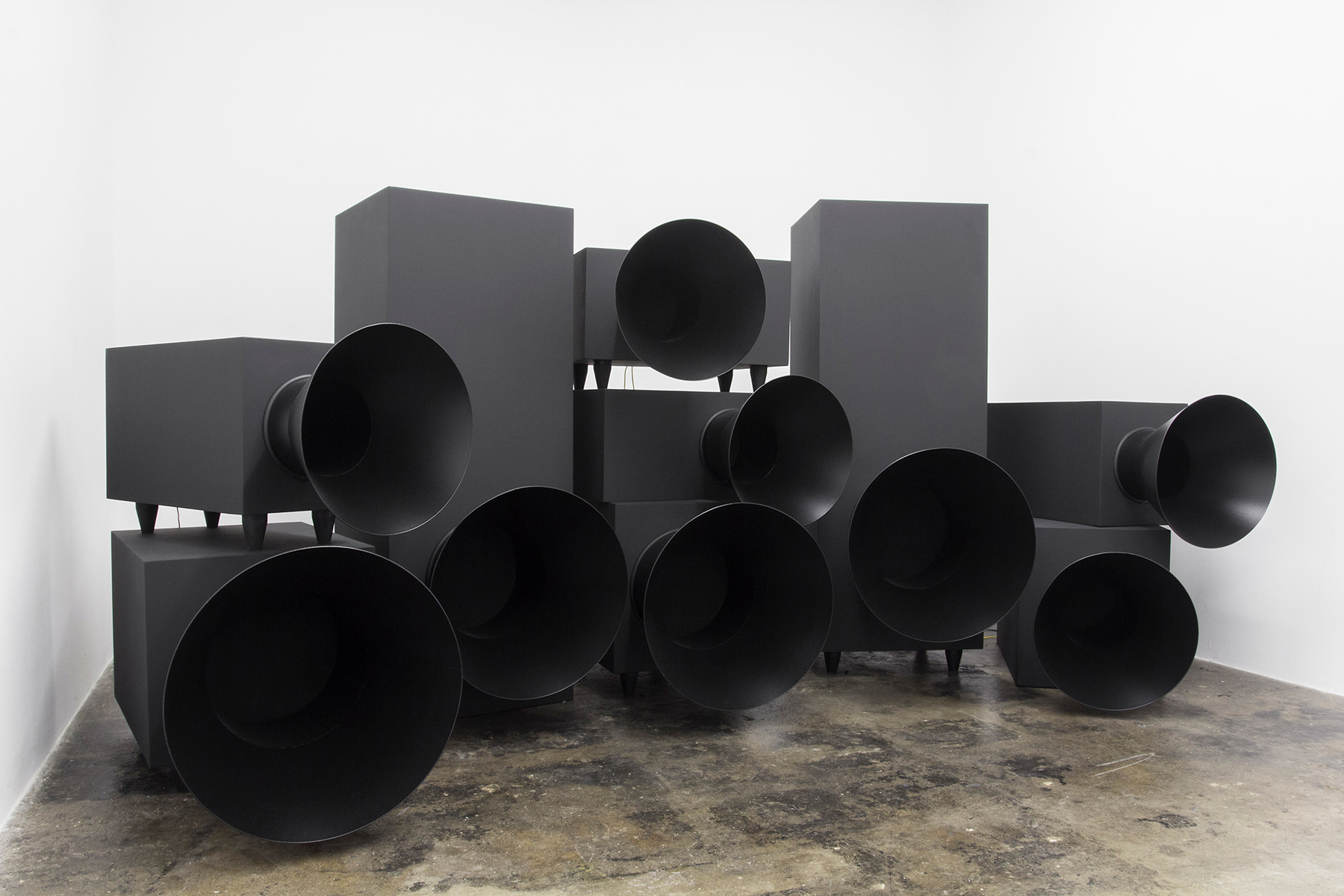


The Two Insomnias, James Webb’s latest solo exhibition of new work, invokes themes of addiction, revolution and romance. Webb will show three works; Untitled (Al Madat), a recording of a Sufi dhikr by patients at the Sultan Bahu Rehab Centre in Mitchell’s Plain; Children of the Revolution, Webb’s re-working of the T.Rex glam rock anthem of the same name into an isiXhosa protest song, which was commissioned for the 2013 Venice Biennale; and There Is A Light That Never Goes Out, a Chinese neon text piece. As is typical of Webb’s practice, these works sample, reframe and repurpose language and cultural capital, often concealing the ‘spirit’ of one culture inside the body of another. The Two Insomnias, which takes its title from the poet Rumi, seeks to untangle the relationships between nationalism, the individual, and the headiness of belonging.
In Children of the Revolution, the meaning and power of the original lyrics are transformed and amplified by the legacy of political protest, revolution and trauma in South Africa. Through the voices of a different time and place, and a rearranged score by composer and choir leader Bongani Magatyana, the T.Rex song is counter-colonised, plucked from its sparkling Glam Rock origins and used as a rallying cry into the past, present and future of this country. The piece is broadcast from 9 custom-made speaker cabinets visually echoing the Intonarumori noise generating machines of the Italian Futurist Luigi Russolo. Russolo designed the Intonarumori as an instrument that would reflect the aural progress of a new era. In “The Art of Noise” manifesto, he wrote about sound in the context of the Industrial Revolution, and the emergent ‘noise aesthetics’ of the time. This document was published in the same year the 1913 Land Act was passed in South Africa, and the artwork allows the early Modernist radical politics of change and revolution to speak to the socio-political unrest of South Africa then and now.
The recorded chants of recovering drug addicts from the Sultan Bahu Rehab Centre in Untitled (Al Madat) provide a different perspective on the idea of the chorus. Their voices are joined in a shared experience of sublimation and community healing, as they use the dhikr to move through a space of intoxication into one of transcendence. Dhikr (literally, “remembrance”) is a traditional Islamic recitation, where the names of God are chanted with special breathing techniques, often with trance-like effects, brought to the Cape by the Malay Slaves from the 1600s. This ritual is used by the Rehabilitation Centre as an augmentation to the curative process. “Al Madat,” the specific dhikr used for this installation, translates as “help,” and is here used to implore the Prophet for assistance. This work draws on the history of Malay slaves in the Cape, and the modern day struggle with drug abuse, illness and gang violence in the Cape Flats and Mitchell’s Plain.
Alternating between local and globalized forms of community and nationhood, There is a Light That Never Goes Out brings to bear the figure of China as a looming industrial giant, as well as expressing a lived experience of Chinese influence in terms of its role in the economy and imagination of the West. This work plays out a dual sense of Romance and Fear associated with Chinese cultural and commercial expansion, while continuing to develop the ideas of nationalism, translation, and ‘pop’ sampling found elsewhere on the show.